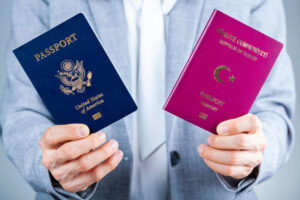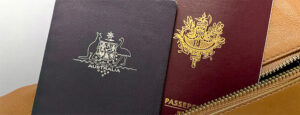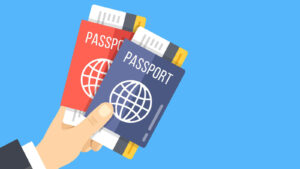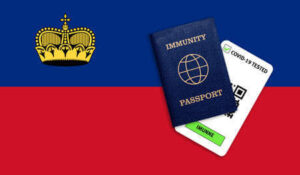The Electronic System for Travel Authorization (ESTA) is an essential component for travelers with dual citizenship. This article aims to provide guidance and assistance to individuals navigating the ESTA process. Dual citizenship presents unique challenges when it comes to travel authorization, as travelers need to determine which passport to use and understand the implications for their ESTA application. By offering valuable insights and information, this article seeks to help dual citizens successfully navigate the ESTA system and ensure a smooth travel experience. Whether it involves understanding the eligibility criteria, knowing which passport to use, or addressing common concerns, this article serves as a comprehensive guide for travelers with dual citizenship seeking ESTA approval.
This article will discuss a number of topics:
- Understanding Dual Citizenship and ESTA Eligibility
- Determining the Appropriate Passport for ESTA Application
- ESTA Application Process for Dual Citizens
- Traveling with Dual Citizenship and ESTA
- Considerations for Specific Dual Citizenship Scenarios
Understanding Dual Citizenship and ESTA
Dual citizenship refers to an individual’s legal status of being a citizen of two countries simultaneously. This occurs when a person acquires citizenship of a second country in addition to their original citizenship. Dual citizens enjoy certain benefits, such as the ability to live, work, and study in both countries, access to social services, and the right to vote. However, holding ESTA USA dual citizenship also comes with challenges, including navigating travel requirements and understanding the implications for travel authorizations like the Electronic System for Travel Authorization (ESTA).
ESTA Eligibility for Dual Citizens
ESTA eligibility for dual citizens depends on various factors, such as the countries involved and the purpose of travel. Generally, dual citizens are required to use the passport of the country for which they are applying for ESTA. If one of their nationalities is eligible for the Visa Waiver Program (VWP), they can apply for ESTA using that passport. However, if neither of their nationalities is eligible, they may need to apply for a visa instead.
Common questions and concerns regarding dual citizenship and ESTA
Travelers with dual citizenship often have questions and concerns regarding which passport to use for ESTA, potential complications arising from dual citizenship, and the impact on their ESTA application. Common questions may include whether they need to disclose their ESTA with dual citizenship, how to handle discrepancies between passports, and what to do if they have different names on their passports. Addressing these concerns and providing clear guidance can help dual citizens navigate the ESTA process with confidence and ensure a smooth travel experience.
Determining the Appropriate Passport for ESTA Application
Selecting the correct country of citizenship is crucial for an accurate ESTA application. Also, Selecting the right passport for ESTA. The ESTA is linked to the traveler’s citizenship, and the eligibility criteria and visa waiver program requirements vary between countries. By providing the accurate country of citizenship, travelers ensure that their ESTA application aligns with the correct regulations and procedures.
In some cases, a person’s country of citizenship may differ from their country of residence. This can occur due to factors such as birthright citizenship, marriage to a foreign national, or naturalization in another country. It is important for travelers to understand the distinction between their country of citizenship and residence to correctly determine which passport to use for their ESTA application.
Choosing the Passport for ESTA Travel
When applying for ESTA, travelers should carefully consider which passport to use. In most cases, it is advisable to use the passport corresponding to the country of citizenship eligible for the Visa Waiver Program. This ensures compliance with ESTA requirements and allows travelers to benefit from visa-free travel.
Discuss considerations such as visa exemptions and travel restrictions based on citizenship
Travelers should be aware of visa exemptions and travel restrictions based on their citizenship. Some countries have bilateral agreements or visa waiver programs that allow citizens to travel to certain destinations without a visa. Understanding these considerations helps determine the passport to use for ESTA travel, ensuring a smooth and hassle-free journey.
ESTA Application Process for Dual Citizens
Dual citizenship can add complexity to the ESTA application process, but with the right guidance, navigating through it becomes manageable. This article aims to provide dual citizens with valuable insights on how to successfully complete the ESTA application and accurately disclose their ESTA dual citizenship status.
Completing the ESTA Application
Dual citizens should ensure that they accurately complete the ESTA application by providing consistent information across their passports and travel documents. It is important to carefully review and enter all details, including personal information and travel history, ensuring accuracy and consistency.
Disclosure of Dual Citizenship
During the ESTA application process, it is crucial to disclose dual citizenship if applicable. Failure to disclose this information may lead to complications or even denial of the ESTA. Dual citizens should provide accurate and complete information regarding their citizenships, including details such as passport numbers, issuing countries, and any other relevant information.
Traveling with Dual Citizenship and ESTA
Travelers with dual citizenship face unique considerations when it comes to navigating the ESTA process. Understanding how to present the approved ESTA and effectively travel with both passports is essential for a smooth journey.
Presenting the Approved ESTA
Once you have received your approved ESTA, it is important to present it at the port of entry in the United States. The immigration officer may ask questions or have concerns related to your dual citizenship. Remain calm and provide accurate information regarding your dual citizenship status, ensuring transparency and compliance with immigration requirements.
Traveling with Both Passports
When traveling internationally with dual passports, it is crucial to use the appropriate passport for entry and exit. Determine which passport is eligible for visa-free travel under the Visa Waiver Program (VWP) and present that passport when applying for the ESTA. Use the same passport for entry into and exit from the United States to ensure a consistent travel record.
Considerations for Specific Dual Citizenship Scenarios
Dual citizenship can present unique considerations when navigating the ESTA process. Depending on whether you hold dual citizenship with a Visa Waiver Program (VWP) country or a non-VWP country, there are specific factors to keep in mind.
Dual Citizenship with Visa Waiver Program Countries
If you hold dual citizenship with a VWP country, it is important to determine which passport you will use for travel to the United States. The ESTA application for dual citizenship should be completed using the passport that is eligible for visa-free travel under the VWP. Ensure that the information provided in your ESTA application matches the details on the VWP-eligible passport. If your ESTA dual citizenship includes a passport from a non-VWP country, you may be required to obtain a visa for travel to the United States.
Dual Citizenship with Non-VWP Countries
For individuals with dual citizenship from non-VWP countries, additional visa requirements may apply. In such cases, it is necessary to obtain the appropriate visa before traveling to the United States. Consult with the U.S. embassy or consulate in your country of citizenship to understand the visa application process and requirements specific to your situation. Be prepared to provide accurate and comprehensive information about your ESTA dual citizenship and travel plans.
Dual citizenship FAQs for ESTA
Dual citizenship can raise various questions and considerations when it comes to applying for an Electronic System for Travel Authorization (ESTA). Here are some frequently asked questions (FAQs) to provide clarity and guidance for travelers with dual citizenship:
- Can I apply for ESTA if I have dual citizenship? Yes, dual citizens are eligible to apply for ESTA, as long as they meet all the requirements and criteria of the Visa Waiver Program (VWP). It is important to select the appropriate passport for your ESTA application and provide accurate information about your dual citizenship during the application process.
- Do I need to disclose both passports in my ESTA application? Yes, it is essential to disclose all passports you hold during the ESTA application. This includes providing information about both passports and ensuring consistency in the details provided. It is important to be transparent and truthful about your dual citizenship status.
- Which passport should I use when traveling with an approved ESTA? When traveling to the United States with an approved ESTA, you should use the passport that you used for your ESTA application. It is important to present the same passport that was associated with your approved ESTA at the U.S. port of entry.
- What if I have different names on my passports due to dual citizenship? If you have different names on your passports due to dual citizenship, it is crucial to ensure consistency in the name provided on your ESTA application. You may need to provide supporting documentation, such as a marriage certificate or legal name change documentation, to establish the connection between your different names.
- Can I use different passports for different trips under the VWP? It is recommended to use the same passport consistently when traveling under the Visa Waiver Program. Using different passports for different trips may create confusion and potential complications during the travel and entry process. Consistency in passport usage helps ensure a smoother travel experience.
- Do I need a visa if I hold dual citizenship with a non-VWP country? If you hold dual citizenship with a non-VWP country, you may need to obtain a visa to travel to the United States, even if you are eligible for ESTA with your other citizenship. It is important to check the specific visa requirements based on your non-VWP country citizenship.
Conclusion
Traveling with dual citizenship can add complexity to the ESTA application process, but with proper understanding and preparation, it can be navigated smoothly. It is crucial for dual citizens to accurately complete their ESTA application, ensuring consistency across their passports and travel documents. Disclosure of dual citizenship is an important requirement, and travelers must provide the necessary information truthfully and accurately.
When traveling with dual citizenship and an approved ESTA, it is essential to present the approved travel authorization and dual citizenship at the U.S. port of entry. Travelers should be prepared for potential questions or concerns regarding their dual citizenship status during the entry process. It is also important to use the appropriate passport for entry and exit, following the guidelines and regulations of the respective countries.
Considerations may vary depending on whether you hold ESTA for dual citizenship with a Visa Waiver Program (VWP) country or a non-VWP country. Understanding the specific requirements and visa implications for each scenario is crucial. Dual citizens with non-VWP country passports may need to fulfill additional visa requirements to travel to the United States.
Remember, the ESTA Dual citizenship and immigration procedures are designed to ensure compliance and facilitate secure and streamlined travel to the United States. With proper understanding and adherence to the requirements, dual citizens can enjoy a smooth and hassle-free travel experience.



